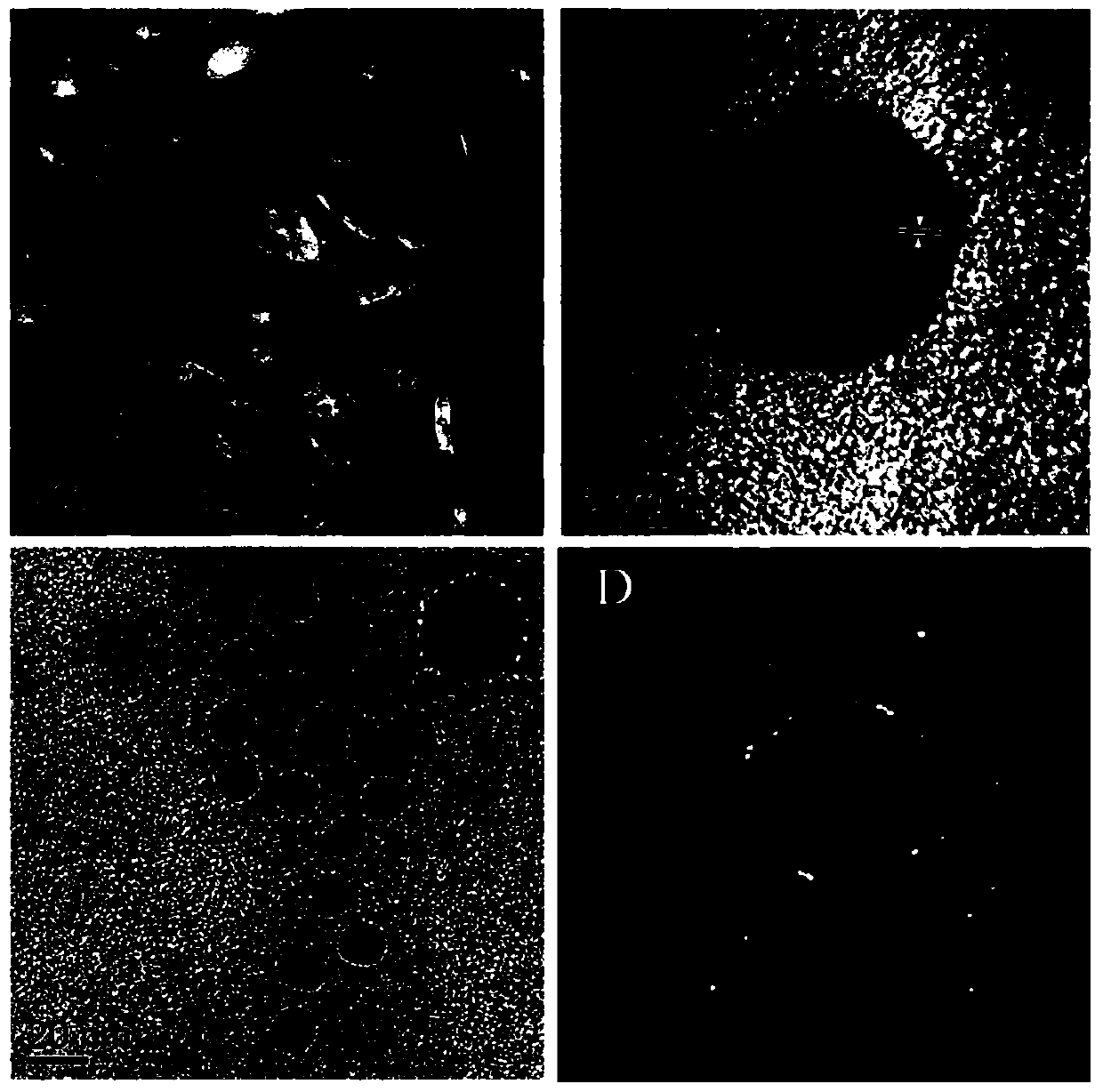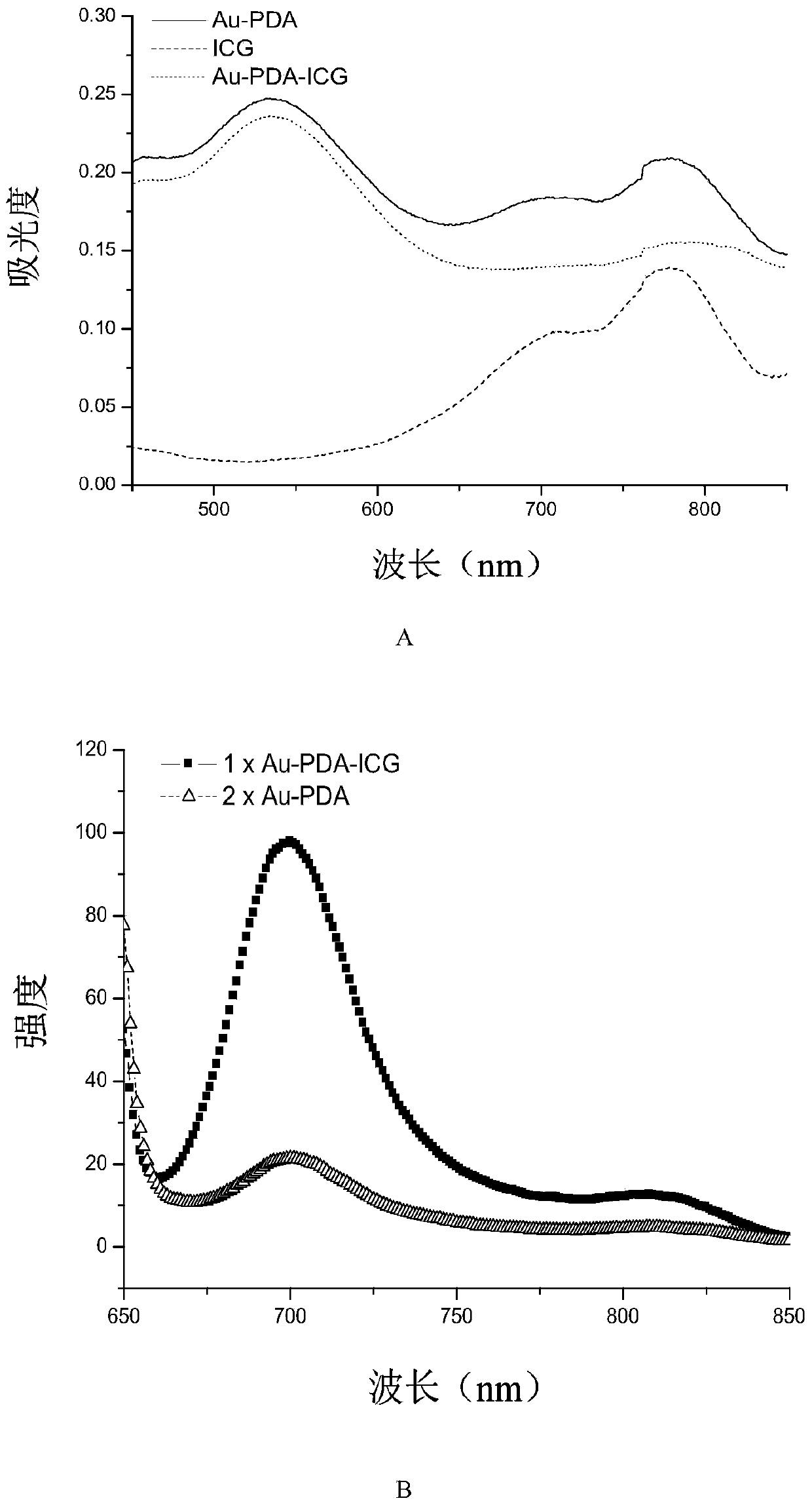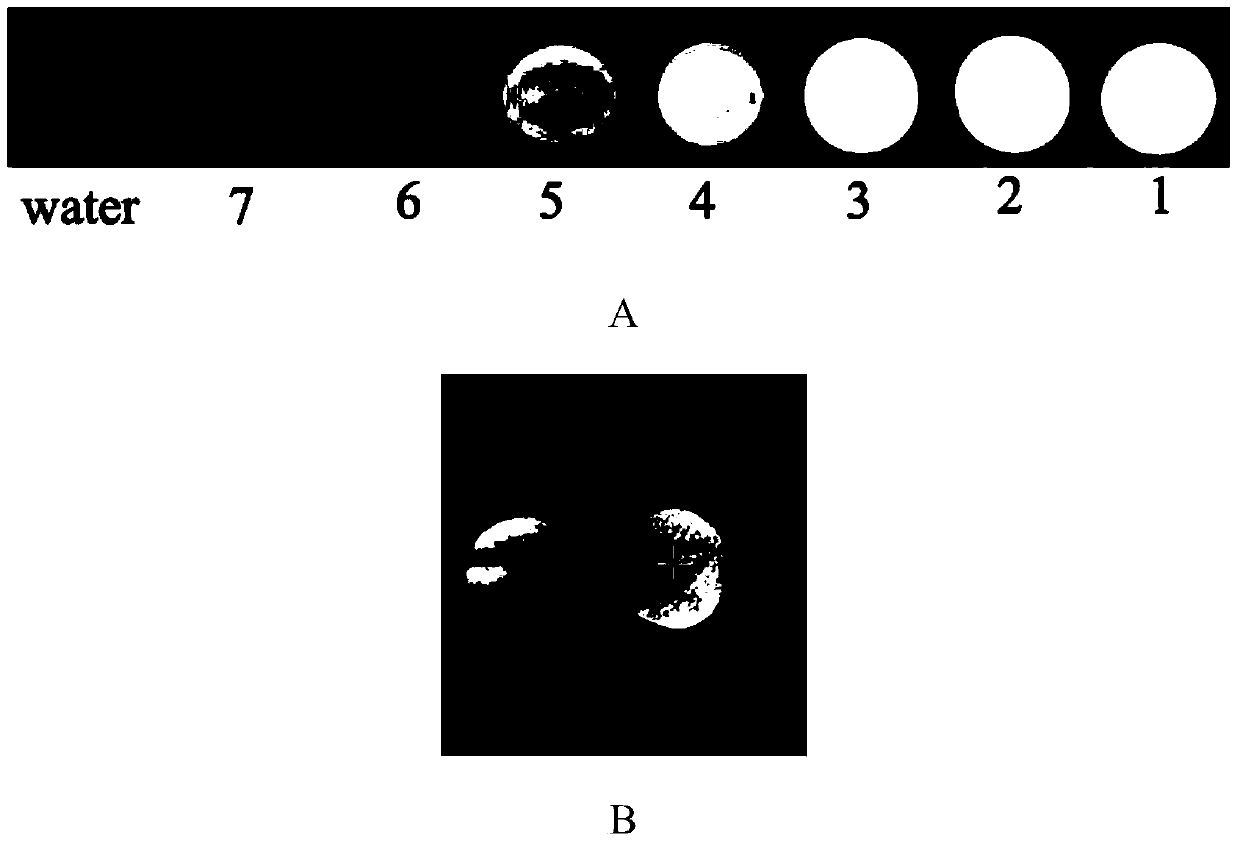Multifunctional nano probe for multimodal images and photothermal therapy of liver cancer and application of multifunctional nano probe
A nanoprobe, multifunctional technology, applied in the field of multimodal imaging, can solve the problems of increasing the sensitivity and specificity of imaging technology, increasing the number of patients, increasing the economic burden of patients, etc., to reduce fluorescence quenching and aqueous phase instability. The effect of reducing the radiation dose of X-ray and improving the spatial contrast of CT
- Summary
- Abstract
- Description
- Claims
- Application Information
AI Technical Summary
Problems solved by technology
Method used
Image
Examples
Embodiment 1
[0033] Suspend 1ml of chloroauric acid with a concentration of 1M in 49ml of Milli-Q ultrapure water (Millipore, USA), put the mixed 50ml of chloroauric acid suspension into a clean three-necked flask of 100ml system, and place in an oil bath And under the reflux device, heat to 150°C until just boiling, after boiling for 5 minutes, quickly add 6ml of trisodium citrate solution with a concentration of 0.015g / ml to it, with strong stirring, and continue heating for 20 minutes, then stop heating, Stir to room temperature to form a suspension of gold nanoparticles, the diameter of which is about 10-16 nm, and centrifuge at 12000 rpm for 15 minutes to collect the gold nanoparticles for later use.
Embodiment 2
[0035] Suspend the above precipitate in the newly prepared 10mM tris-HCl solution containing 2mg / ml dopamine (DA, Sigma company), adjust the pH to 8.5, and gently stir for about 6h, centrifuge at 7000-8000rpm for 15min and wash twice, The coated Au-PDA nanoparticles were collected and suspended in Milli-Q ultrapure water to obtain an Au-PDA suspension. At this time, the dopamine is oxidized and self-polymerized by light to form a PDA polydopamine layer, which is used to modify the surface of Au nanoparticles, and exposes a large number of amino groups on the surface of Au nanoparticles, which is easy to modify later.
Embodiment 3
[0037] Pipette 20 μl of DMSO solution containing 12.5 mg / ml ICG (indocyanine green, Tongren Chemical Research Institute (Shanghai)) and suspend in 400 μl of Milli-Q ultrapure water, then take 100 μl of the aforementioned solution and add it to Example 2. In the prepared 3ml Au-PDA suspension, adjust the pH to 6.5, shake at room temperature in the dark for 2 hours, rest for 2 hours, centrifuge at 7000-8000rpm for 10 minutes, wash twice to remove unadsorbed ICG molecules, and the obtained nanoparticles are suspended in Prepare 3ml of 0.02M Au-PDA-ICG nanosuspension in Milli-Q ultrapure water for later use. The above-mentioned Au-PDA-ICG nanosuspension already has the functions of CT imaging, near-infrared fluorescence imaging and photothermal conversion.
PUM
| Property | Measurement | Unit |
|---|---|---|
| Diameter | aaaaa | aaaaa |
| Particle diameter | aaaaa | aaaaa |
Abstract
Description
Claims
Application Information
 Login to View More
Login to View More - R&D
- Intellectual Property
- Life Sciences
- Materials
- Tech Scout
- Unparalleled Data Quality
- Higher Quality Content
- 60% Fewer Hallucinations
Browse by: Latest US Patents, China's latest patents, Technical Efficacy Thesaurus, Application Domain, Technology Topic, Popular Technical Reports.
© 2025 PatSnap. All rights reserved.Legal|Privacy policy|Modern Slavery Act Transparency Statement|Sitemap|About US| Contact US: help@patsnap.com



